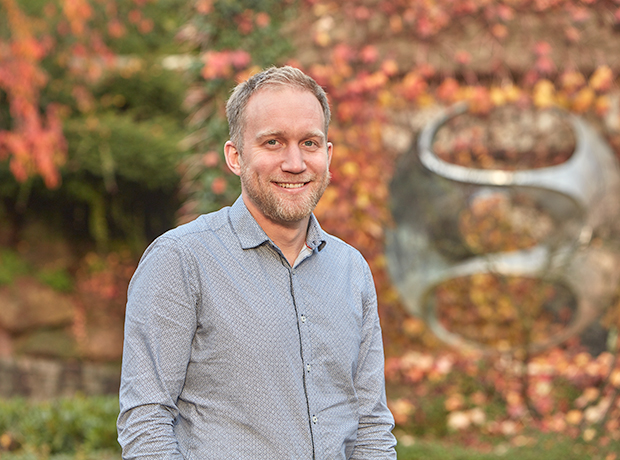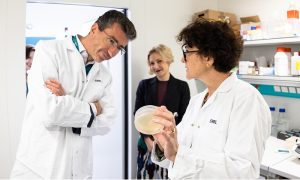
Welcome: Arnaud Krebs
EMBL’s new group leader studies how gene expression is controlled

Arnaud Krebs joins the Genome Biology Unit as EMBL’s new group leader. He will employ innovative genomics strategies to understand the mechanisms that control gene expression.
Explain your research in a nutshell
Regardless of their differences, all cells in your body share the same genome. In order to create different organs – like the heart or the eye – each cell type makes a different interpretation of the same genetic information. This is controlled by proteins called transcription factors, which bind to DNA ‘switches’, to regulate which genes get activated, and which get repressed. Exactly how cells regulate these mechanisms is still a very open question. My group will be developing new approaches, such as Single Molecule Footprinting, to further our understanding of gene expression mechanisms.
How would you describe Single Molecule Footprinting (SMF)?
So far, when studying transcription factors, we had to record millions of binding events happening in a population of cells, and then average them out, leading to a rather blurry picture. SMF is a new technology that enables us to detect the binding of transcription factors to DNA switches in each individual cell of a large population. It really opens up many possibilities!
Why is SMF useful?
SMF informs us about the fraction of cells using a certain DNA switch in a population. This means we can understand heterogeneity in a cell population. For instance, do all cells in an organ turn the same genes on and off? These are questions that were inaccessible before.
What unsolved question would you like to answer?
My team’s ultimate goal would be to be able to predict the activity of any gene simply based on the sequence information contained in its DNA switches. People have been trying to do this for years, but we still struggle to do so – especially in mammals. One of the reasons is that transcription factors do not read the information in the DNA linearly. On top of their interaction with DNA, they also communicate with each other. This adds a level of regulation that we still don’t understand well. This is one of the areas that I hope to contribute to in the upcoming years.
Don’t run to the next obvious thing; go for something that really excites you. It’s certainly riskier – but totally worth it!
How do you feel about your transition from post-doc to group leader?
I am really excited about it! I see it as an opportunity to explore more scientific ideas and share the thrill of science. It’s going to be very enriching to develop projects with people in my lab: to plant a seed and see how it evolves. I think scientific ideas often need to mature in order to reach their full potential, and discussing with lab colleagues is, in my opinion, the fastest way to get there. It’s something that has had a very strong impact on my career.
What advice do you have for young scientists that want to become group leaders themselves?
Don’t run to the next obvious thing; go for something that really excites you. It’s certainly riskier – but totally worth it!
Is there any tool you can’t live without?
Sequencers. Some of the modern models are really small but fast! Anyone in the lab can operate them and get results very quickly. This is truly a game changer for us because we can now test all kind of hypotheses very rapidly.


